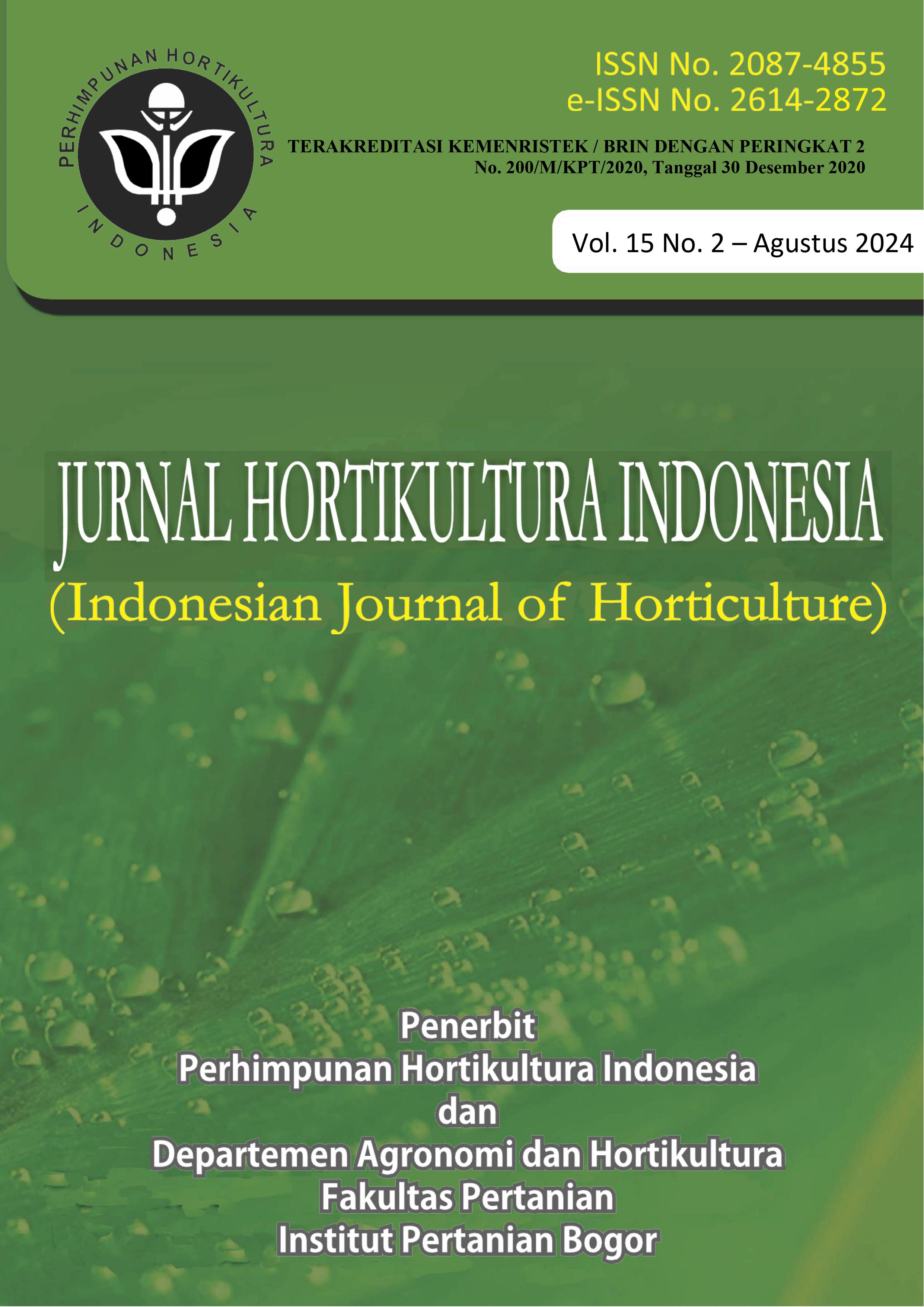Pertumbuhan dan Produksi Bawang Merah (Allium ascalonicum L.) pada Berbagai Jarak Tanam dan Dosis Pupuk NPKMg
Growth and Production of Shallot (Allium ascalonicum L.) at Various Planting Space and Fertilizers Dose of NPKMg
Abstract
Shallot (Allium ascalonicum L.) is a strategic commodity in Indonesia. The needs of shallots increase continuously, so production should be increased. Factors determining production include planting space and fertilization. This research aims to determine the appropriate planting space and NPKMg fertilizer dose for shallot plants. The experiment was arranged factorially in a Randomized Complete Group Design with three replications using the SS-Sakato variety. The first factor is planting space, namely 10 cm x 10 cm, 10 cm x 15 cm, 15 cm x 15 cm, and 15 cm x 20 cm. The second factor is the dose of NPKMg fertilizer (10:12:17:2), namely 200, 400, 600, and 800 kg ha-1. Planting space of 10 cm x 15 cm produces higher leaf area, number of tubers and fresh weight per hill, tile yield, and productivity compared to planting space of 10 cm x 10 cm, 15 cm x 15 cm, and 15 cm x 20 cm. The highest transpiration rate was also produced from 10 cm x 15 cm for all NPKMg fertilizer doses (10:12:17:2), except 400 kg ha-1. Increasing the fertilizer dose of 200 - 800 kg of NPKMg (10:12:17:2) did not increase tuber growth and yield because the N content is low (20 - 80 kg ha-1), so additional single N source fertilizer is needed.
Keywords: tuber weight, number of tubers, NPKMg, SS-Sakato
Downloads
You are free to:
- Share — copy and redistribute the material in any medium or format for any purpose, even commercially.
- Adapt — remix, transform, and build upon the material for any purpose, even commercially.
- The licensor cannot revoke these freedoms as long as you follow the license terms.
Under the following terms:
- Attribution — You must give appropriate credit, provide a link to the license, and indicate if changes were made. You may do so in any reasonable manner, but not in any way that suggests the licensor endorses you or your use.
- ShareAlike — If you remix, transform, or build upon the material, you must distribute your contributions under the same license as the original.
- No additional restrictions — You may not apply legal terms or technological measures that legally restrict others from doing anything the license permits.
Notices:
You do not have to comply with the license for elements of the material in the public domain or where your use is permitted by an applicable exception or limitation.
No warranties are given. The license may not give you all of the permissions necessary for your intended use. For example, other rights such as publicity, privacy, or moral rights may limit how you use the material.













